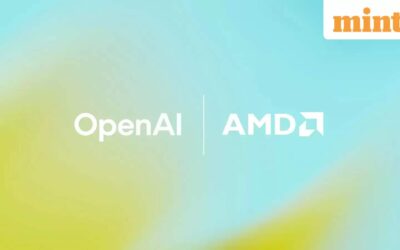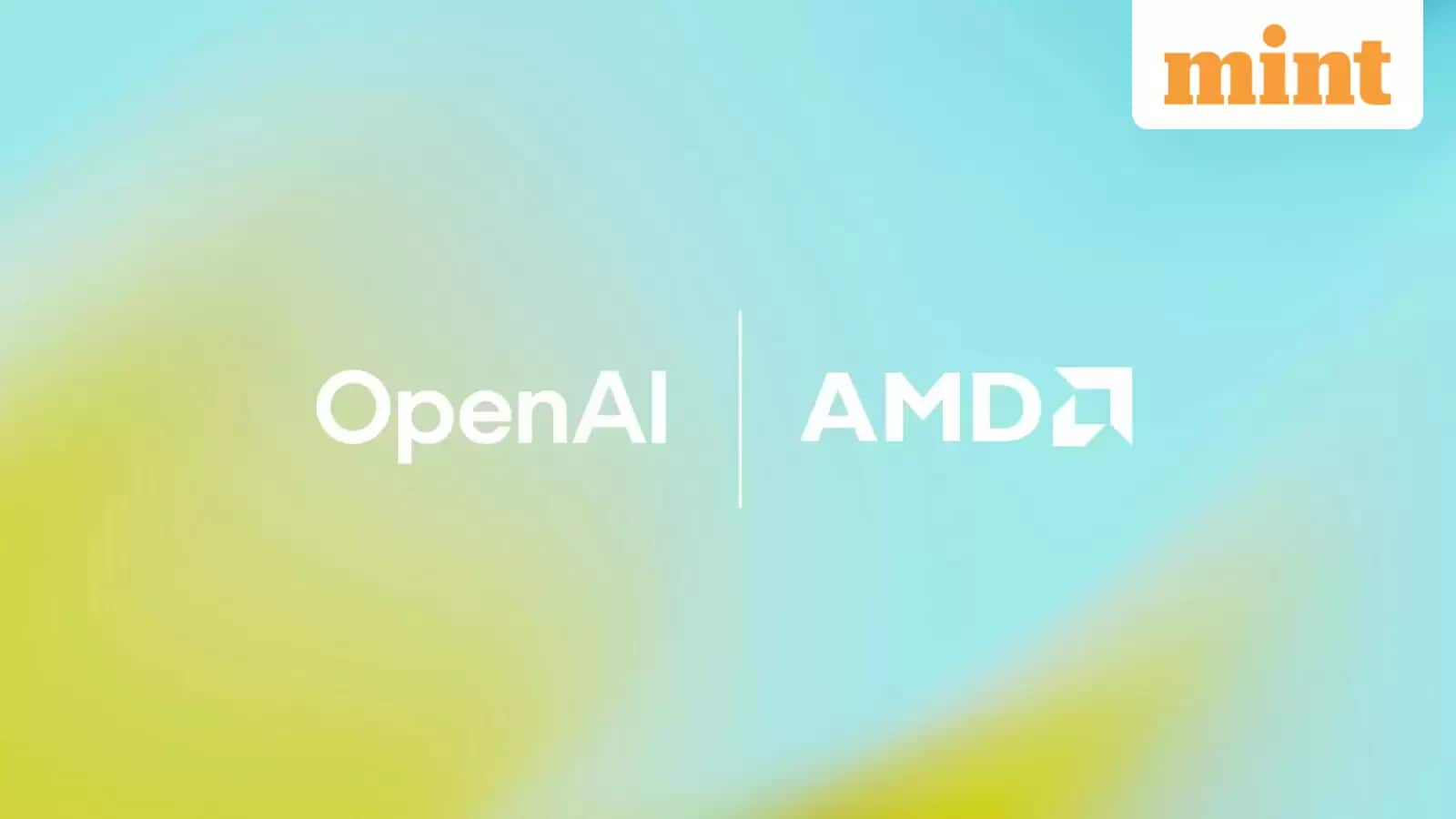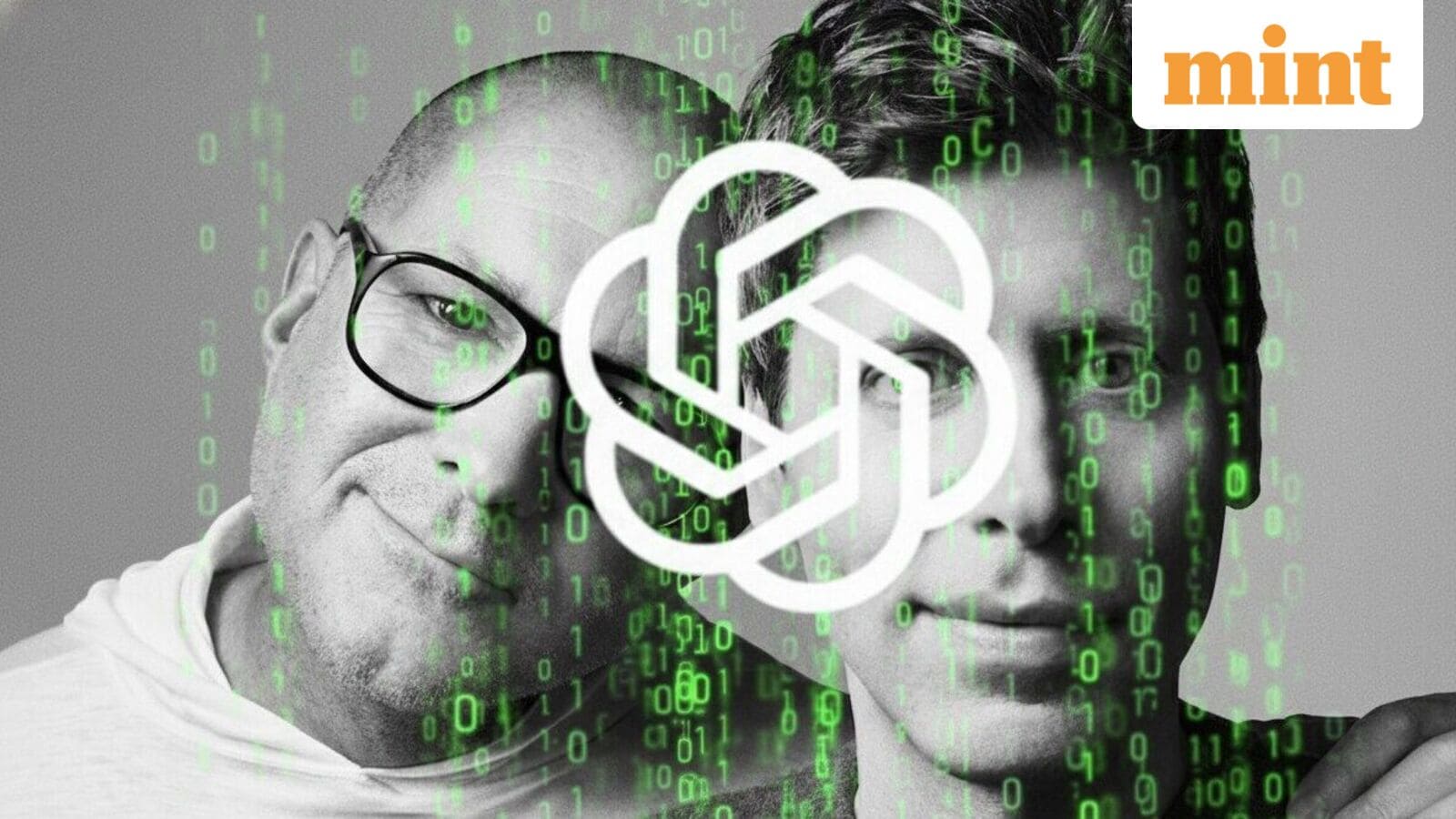How the H-1B squeeze could make India an AI hub; Agentic AI completes a year

Long seen as a symbol of India’s global tech aspirations, the H-1B visa has become more than just an immigration story. With the US tightening rules, India faces the challenge of luring back its talent by offering them a conducive growth path in the country to take advantage of a potential reverse brain drain.
In America, Indian H-1B holders are often seen as low-cost workers taking away local tech jobs, fueling demands to restrict visas. Adding to strained US-India trade ties, US President Donald Trump’s made a shock move to impose a $100,000 upfront fee on H-1B visa petitions from 22 September.
This left Indian techies—who made up 71% of H-1B visa beneficiaries last year, far ahead of China at 11.7%—reeling, as companies like Microsoft, JPMorgan Chase, and Amazon advised staff to either remain in the US or return quickly.
The White House later clarified that the levy would be a one-time fee, not an annual charge, and would not apply to current visa holders re-entering the US. While this eased immediate fears, techies can ill afford to discount long-term career disruptions in the volatile geopolitical scenario.
Ironically, while China is set to roll out a new “K visa” on October 1 to attract global science and tech talent, the US is making it harder for Indian engineers to enter Silicon Valley in a bid to give American workers a leg up in their own country.
What do H-1B visa holders do? While nearly two-thirds of H-1B visas are for computer-related roles such as engineers, scientists, and analysts, according to US Citizenship and Immigration Services, employers sponsoring these visas also come from industries like manufacturing, education, and healthcare (e.g. foreign-born physicians).
And they are paid well. Employers, according to FWD.us, must meet or exceed the “prevailing wage” for comparable local jobs, with most paying more—the median salary in 2023 was $118,000, close to the 90th percentile of all US wages.
Further, H-1B visa holders and their spouses contribute $86 billion annually to the US economy, including $24 billion in federal taxes and $11 billion in state and local levies, FWD.us estimates. They also own 300,000 homes and nearly one million cars.
Data source: Advocacy group FWD.us
Note: The H1-B visa programme admits 85,000 new workers annually through a lottery. Employers pay a $215 registration fee to enter and, if selected, shell out between $1,700 and $4,500 in application and legal costs, depending on whether the process needs to be expedited. The $100,000 one-time payment will have to be factored in for new visa applicants.
Stakes are high: H-1B workers remit roughly about $35 billion to India annually from the US alone, a flow that may plateau or shrink. Wages, remittances, and talent distribution will all feel the ripple effect. Yet disruption creates opportunity. With the right policies, India could accelerate its emergence as an artificial intelligence and innovation nerve center.
Here are five ways this could play out
Sharp policy initiatives: The Indian government is laying the groundwork with investments in sovereign large language models, sovereign AI platforms, and semiconductor incentives.
Coupled with public–private skilling programs, these moves could help India not just deploy AI at scale but also shape standards and governance frameworks for the global market.
GCCs as talent magnets: India’s 2,000-plus global capability centres employ over 1.6 million professionals in functions such as research and development (R&D and AI model development. Walmart’s hub in India builds AI supply chain tools; JPMorgan’s designs global risk models.
The H-1B squeeze makes it cheaper to expand these hubs than send engineers to the US. India already produces the world’s largest pool of STEM graduates, roughly 2.5 million annually. While routine coders face wage compression, highly skilled engineers and returnees from H-1B stints would bring global experience, domain knowledge, and cross-cultural insights.
Sending engineers to the US is not just meant to be a cost save; it’s a strategic tool since onsite deployment allows firms to strengthen client relationships, manage critical projects, and gain a foothold in higher-value services.
If GCCs can absorb skilled engineers who have spent years on H-1B visas—gaining global experience, exposure to large-scale projects, and familiarity with advanced client expectations—in leadership and domain-heavy roles, it can make India not just a delivery center but a strategic hub where work is conceived, executed, and managed globally.
That said, not all returning or local employees are immediately employable in high-value roles.
AI-augmented workforce: The US’s visa curbs may not overhaul the 30-35% of IT revenue still tied to application development and maintenance (ADM), but will accelerate AI adoption in higher-value services like cloud, digital transformation, and consulting.
Jobs are becoming hybrid, mixing human oversight with AI ops (operations), compliance, and prompt engineering. Those who adapt will thrive; those stuck in legacy ADM risk being bypassed as US clients automate in-house.
Startup surge: Not all returning engineers will head to GCCs. Many could seed startups, bringing US exposure, capital networks, and product know-how. This “reverse brain gain” could spark India’s next wave of AI-first ventures in fintech, SaaS (software-as-a-service), and healthtech, creating global challengers rooted in Bengaluru and Hyderabad rather than Silicon Valley.
Addressing the reskilling bottleneck: India’s real bottleneck lies in education and retraining. Without large-scale investment, the workforce could split into two tracks: a thriving AI elite, and a stagnant pool of commoditized programmers. Universities, edtech firms, and IT majors will need to deliver aggressive upskilling if India is to fully capture the opportunity.
Six lessons for agentic enterprise transformation: McKinsey
Imagine a marketing team deploying an AI agent to create an entire ad campaign—researching the target audience, drafting content, and optimizing strategy seamlessly. Customer service is another area undergoing transformation. Many companies today use agentic AI platforms to reduce response times and minimize the need for human intervention. The hope is that these innovations will save them time and resources while improving user satisfaction.
The reason: AI agentic systems, loosely referred to as AI agents, are models capable of autonomous decision-making and action to achieve specific goals, without human intervention. But as agentic AI celebrates its first anniversary this month, experts caution that enterprises must not be carried away by the hype.
McKinsey reviewed over 50 agentic AI projects, including its own, and distilled six key lessons for business leaders looking to unlock value from the technology. The findings suggest that while companies are rushing to experiment with AI agents the results often fall short. The problem, according to McKinsey, is not the technology itself but how it’s applied.
1. Workflow over agents: Organizations that focus on reimagining processes—how people, tools, and decisions interact—see better outcomes. For instance, one legal-services provider embedded learning loops into its contract-review system. Every user edit was fed back into the agents, making them smarter over time. The real innovation lay in reengineering the workflow, not the agent alone.
2. Agents aren’t always the answer: Not every task needs an AI agent. Standardized, rule-heavy processes like onboarding or regulatory disclosures are often better served with simpler automation or predictive models. By contrast, high-variance tasks such as extracting financial data or analyzing contracts can benefit greatly from agentic systems.
Leaders should ask: “What is the work, and which tool—or agent—is best suited for it?”
3. Avoid ‘AI slop’: Shiny demos can collapse in practice if outputs frustrate users. Teams must treat agents like new employees: give them job descriptions, test their performance, and provide feedback loops.
A global bank learned this by refining its compliance agents through rigorous evaluations, which built trust and improved adoption.
4. Build observability into workflows: Scaling agents makes error-tracking harder. Companies need monitoring at every step, not just at outcomes. When one legal-services provider saw a sudden accuracy drop, observability tools helped pinpoint poor upstream data, allowing a fix before problems snowballed.
5. Reuse, don’t reinvent: Instead of building one-off agents, companies should design reusable components for recurring tasks like extracting or analyzing data. Centralized frameworks with validated prompts, code, and training assets can eliminate up to half of nonessential work.
6. Humans stay essential: Even as agentic systems scale, people remain critical for oversight, compliance, and judgment. The human role will shrink in volume but grow in importance. Success depends on designing collaborative workflows with clear points for human input and user-friendly interfaces that build trust. You may read the full article here.
Quiz of the week: What is Granite Docling?
- AI-powered tool to build mosaic tiles for home floors
- AI-powered tool to convert building material into cement
- AI-powered tool to convert documents into machine-readable formats
- AI-powered tool to build smart docks
Answer: On 17 September, IBM released Granite-Docling—a 258 million parameter, open-source vision-language model (VLM) for converting documents to machine-readable formats while fully preserving their layout, tables, equations, lists, and more. The tool is available on Hugging Face through a standard Apache 2.0 license.
Competition: While Google’s NotebookLM allows individual users looking for a versatile AI tool to assist with research, study, and content creation, IBM’s Granite Docling is a specialized tool that developers can use for document processing and integration into existing systems.
Granite Docling faces competition from both enterprise and research tools in the Document AI space. Established players like Google Document AI, Microsoft Azure Form Recognizer, and AWS Textract dominate with robust optical character recognition, form, and table extraction, though they are largely proprietary and less focused on preserving complex layouts or scientific content.
ABBYY FlexiCapture and startups such as Nanonets, Rossum, and Klippa also offer intelligent document processing with varying strengths in workflows and automation.
Differentiator: General-purpose markup languages like hyper text mark-up language (HTML) or Markdown weren’t designed for image-to-sequence tasks like document conversion and hence are unable to satisfactorily describe the specific attributes needed to accurately render many common elements of PDFs, slide decks and infographics. This also increases total token count and limits the ability to preserve structural elements.
IBM’s Granite Docling uses DocTags—a universal markup format developed by IBM Research that captures and describes all page elements like charts, tables, forms, code, equations, footnotes, and captions, including their contextual relation to one another and location within a document layout. And DocTags is optimized for LLM readability.
Multilingual: The new Granite Docling is a polished, ready-to-use version of the earlier SmolDocling-256M-preview model that IBM Research released with Hugging Face in March. SmolDocling-256-preview was trained on an English-language corpus. It omits languages that don’t use the Latin script, which limits its use in many parts of the world.
IBM wants to expand the scope with Granite Docling, though it admits that the tool’s multilingual capabilities “are in an early, experimental stage and have not yet been validated for enterprise-ready performance or stability”.
AI Tool of the Week
by AI&Beyond, with Jaspreet Bindra and Anuj Magazine
The AI hack we unlock today is based on Google NotebookLM’s Custom Reports feature.
What problem does NotebookLM’s custom reports solve?
Business leaders and strategy professionals face a fundamental productivity crisis: they are drowning in information but starving for insights.The typical executive spends a good chunk of their time manually synthesizing data from multiple sources—earnings calls, market research, competitor intelligence, and regulatory documents—into coherent strategic narratives. This process is not only time-consuming but also prone to human error and inconsistent formatting.
The second critical pain point is context relevance. Generic report templates rarely match the specific strategic context, audience sophistication, or decision-making requirements of senior leadership. A board presentation requires different depth and tone than an operational briefing, yet most tools treat all reports the same.
NotebookLM’s custom reports solve this by intelligently analyzing your source content and automatically suggesting the most appropriate report format—whether that’s a strategic memo for board consumption or a concept explainer for team alignment.
How to access: https://notebooklm.google/
NotebookLM’s custom reports can help you:-Generate context-aware formats: It automatically suggests report templates based on your content type (strategic plans become policy briefs, market research becomes competitive analysis)-Create executive-ready documents: Transform raw data into briefing docs, strategic memos, concept explainers, and comparative analyses-Customize for specific audiences: Tailor tone, depth, and focus areas using the pencil icon customization feature
M&A due diligence intelligence: Involves comprehensive assessment of acquisition targets combining financial performance, market positioning, and strategic fit analysis.
Step 1: Upload target company’s latest four quarterly earnings calls, 10-K filings, and three industry analyst reports
Step 2: Click “Create Report” and select Strategic Memo (perfect for executive decision-making requiring synthesis of complex financial data)
Step 3: Customize focus areas: “market positioning, synergy opportunities, integration risks”
Why Strategic Memo: It provides executive summary format with key findings and recommendations that boards expect
– Competitive threat assessment: Involves analysis of competitor moves, product launches, and market positioning changes that could impact your business strategy.
Step 1: Feed in competitor press releases, product launch announcements, and pricing strategy documents as a source
Step 2: Choose Policy Brief format (ideal for structured analysis requiring immediate action items)
Step 3: Specify audience: “C-suite executives”, and tone: “urgent strategic implications”
Why policy brief: It delivers concise threat analysis with clear recommendations for immediate strategic response
What makes NotebookLM’s custom reports special?
Dynamic suggestions: AI analyzes your content and suggests the most relevant report format automatically
Source grounding: All insights include citations, ensuring credibility and traceability
One-click customization: The pencil icon feature lets you specify audience, tone, and focus areas
Note: The tools and analysis featured in this section demonstrated clear value based on our internal testing. Our recommendations are entirely independent and not influenced by the tool creators.
You may also want to read
BharatGen secures ₹988.6 crore to build multimodal AI for India
In July, I wrote about how India expects to join a fast-growing club of countries that have developed or are developing sovereign language models. On 18 September, BharatGen, an Indian government-backed multimodal sovereign AI initiative, ₹988.6 crore in funding”>said it had secured ₹988.6 crore in funding from the Union Ministry of Electronics and Information Technology (MeitY).
The investment will power the creation of advanced AI models, including large language and multimodal systems with up to one trillion parameters, alongside smaller, domain-specific models.
It will also accelerate India-focused technologies such as text-to-speech, speech recognition, and vision-language tools, with applications spanning agriculture, governance, finance, healthcare, and education.
BharatGen will train these models on cutting-edge supercomputing clusters while allocating resources for critical infrastructure needs.
Earlier this year, the consortium unveiled Param-1, a bilingual LLM with 2.9 billion parameters trained on five trillion tokens in English and Hindi. The next phase aims to build multilingual and multimodal systems covering all 22 scheduled Indian languages, ensuring equitable access nationwide.
The BharatGen consortium brings together top institutions including several leading IITs and IIM-Indore, establishing a strong collaborative base. You may read more about this here.
Nvidia bets $100 billion on OpenAI to build AI infrastructure
Nvidia and OpenAI plan to partner to deploy at least 10 gigawatts of Nvidia systems beginning in the second half of 2026 (on Nvidia’s Vera Rubin platform), to train and run OpenAI’s future models on the path toward superintelligence.
To support the rollout, Nvidia intends to invest up to $100 billion in OpenAI, underscoring the scale of computing power required for the next wave of AI breakthroughs.
“This marks the next leap forward—deploying 10 gigawatts to power the next era of intelligence,” said Jensen Huang, Nvidia’s founder and CEO.
Sam Altman, OpenAI’s CEO, called compute “the basis for the economy of the future”, while co-founder Greg Brockman said the deal would “push back the frontier of intelligence” and scale AI’s benefits globally.
As part of the partnership, OpenAI will treat Nvidia as its preferred compute and networking partner, with the two companies aligning their hardware, software, and model development roadmaps.
The deal complements OpenAI’s collaborations with Microsoft, Oracle, SoftBank, and Stargate partners, and comes as OpenAI’s user base has surged past 700 million weekly active users.
Mark Zuckerberg agrees with Sam Altman on possible AI bubble
Meta CEO Mark Zuckerberg acknowledged the possibility of an AI bubble, likening it to past bubbles. However, he emphasized the need for heavy investment in AI to avoid missing superintelligence advancements.
Elon Musk confirms X’s feed to go fully AI
Elon Musk announced that X’s algorithm will be fully AI-powered by November, aiming for personalised user experience. The platform will allow users to adjust their feeds dynamically and move away from mainstream content. A new feature for Grok, the AI assistant, enables it to read responses aloud.
25% chance AI could be catastrophic: Amodei
Anthropic CEO Dario Amodei warned at the Axios AI + DC Summit that AI carries a 25% risk of catastrophic outcomes but a 75% chance of positive impact. He highlighted threats to societal systems, job displacement, and geopolitical risks, while stressing that governance can shape outcomes.




